The Principality of Monaco looks like nothing else on the French Riviera. With its cluster of towers, the massive Rocher on which stretches the old town and the iconic casino of Monte-Carlo, Monaco is also one of the wealthiest states in the world. Unsurprisingly, the micro-state has many exciting features and anecdotes to tell. Whether it’s about geography, demographics, economics, politics or culture, check out a compilation of Facts and Figures about Monaco!
Watch our short video on Monaco: Facts & Figures!
Plan your trip to the Principality of Monaco
- 🏨 Find the best accommodations in Monaco on Booking.com
- 🙋♀️ Get the PASS CÔTE D’AZUR and take your pick from more than 100 unique experiences on the French Riviera!
- 🏛 Visit the Oceanographic Museum on the Rock of Monaco
- 🎯 Take a guided hidden gem tour of Monaco
- 🏎 Enjoy an exhilarating Lamborghini Driving Experience from Monaco
- 🛥 Ride the Ferry from Nice to Monaco and back with this round-trip ferry transfer
- 🥗 Experience the culture and food of Old Nice on a 4-hour sightseeing and tasting tour
- 📚 Read the DK Eyewitness Provence and the Côte d’Azur Travel Guide
- 🤩 Get familiar with the French Riviera
- 🗺 Download the free City Map of Monaco
Facts and figures about Monaco
This compilation of facts and figures about Monaco was updated in mid-2022.
Geography
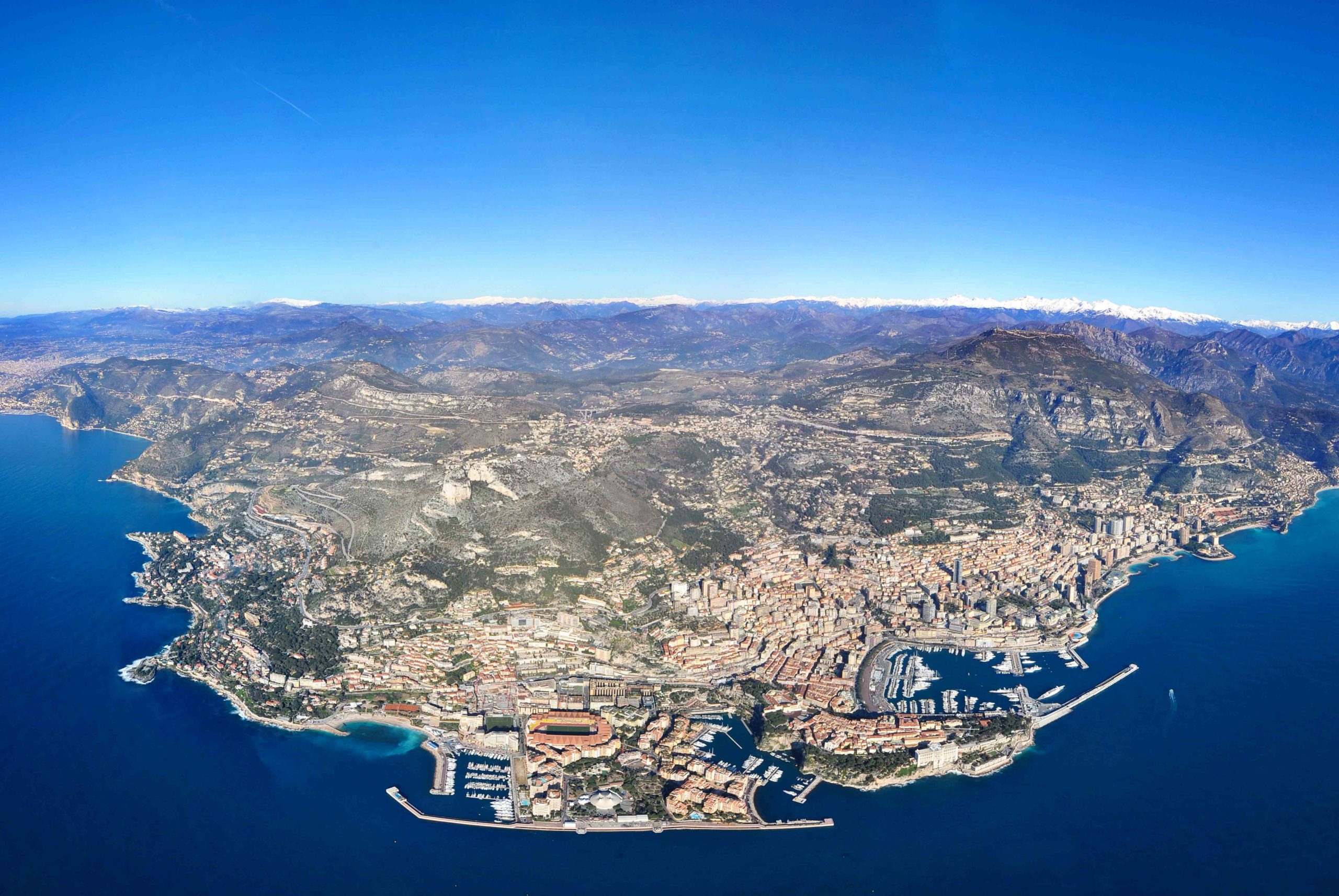
- The area of the principality (2.02 km2, 0.81 sq mi) is smaller than New York’s Central Park (3.41 km2).
- The Principality is the world’s second smallest state after the Vatican.
- The land border with France is 5.47 km long (3.40 mi), and the coastline is 3.8 km (2.3 mi).
- The width of the territory varies between 1,700 and 349 m.
- The Italian border is 16 km, and Nice is 13 km from its centre.
- The highest point of the Principality is a narrow pathway called Chemin des Révoires on the slopes of Mont Agel, reaching 161 m above sea level. The Place du Palais is situated 62 m above sea level.
- Through land reclamation, the Principality’s area has expanded by 20% or 40 hectares.
- The climate of Monaco is generally made up of warm, dry summers and mild, rainy winters. Frosts and snowfalls are extremely rare.
- Sunshine averages 2,583 hours annually, and the number of rainy days does not exceed 62 per year.
- The Principality has four historic districts and ten administrative districts (from 1966). In 2025, the inauguration of a new eleventh district: Le Portier.

Demographics
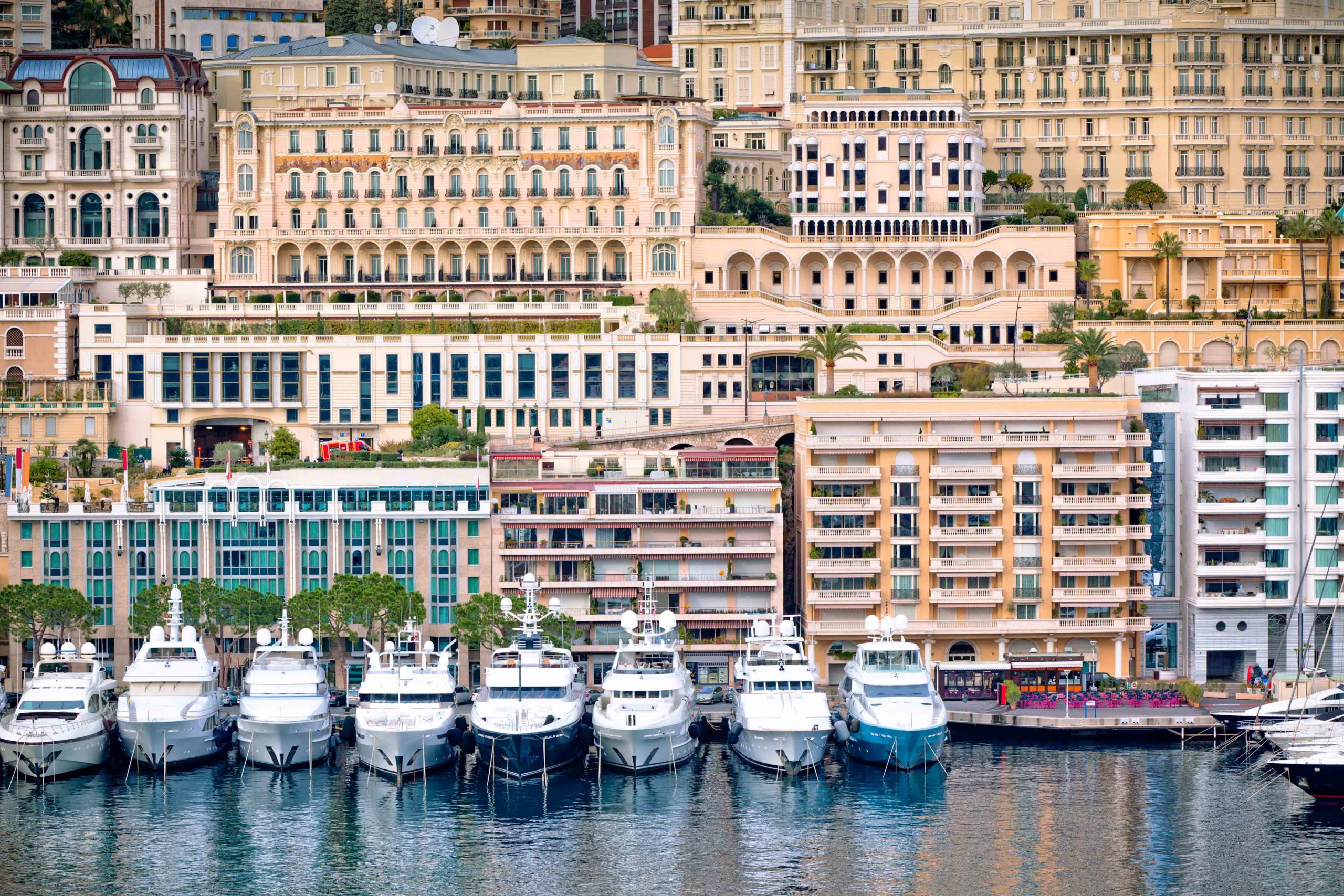
- A national of Monaco is called a Monegasque. Another name for a resident of Monaco who does not have citizenship is sometimes found on the internet: a Monacoian.
- As of 31 December 2021, Monaco had 39,150 inhabitants. The population was only 1,200 in 1867 and 22,300 in 1961. By comparison, the number of people in Liechtenstein is 38,100, and that of San Marino is 34,000.
- 22% of the population live in the Monte Carlo district and only 3% on the Rock (old town).
- Monaco provides 50,000 job positions for only 39,150 inhabitants, which means that there are at least 37,000 to 80,000 people living or working in the Principality daily.
- The citizens of Monaco are a minority in their own country (21.4% of the population). As of 31 December 2021, the Monégasque population was 9,611 people.
- The largest groups are French nationals at 23.7%, followed by Monégasque (21.4%), Italian (20.8%), British (7.1%), Swiss (3%), Belgian (2.7%), German (2.3%), and US nationals (0.9%).
- Monaco is the most densely populated country in the world.
- Life expectancy is the world’s highest at 86.7 years.
- The official language is French, but Italian, English and Monégasque are also spoken.
History
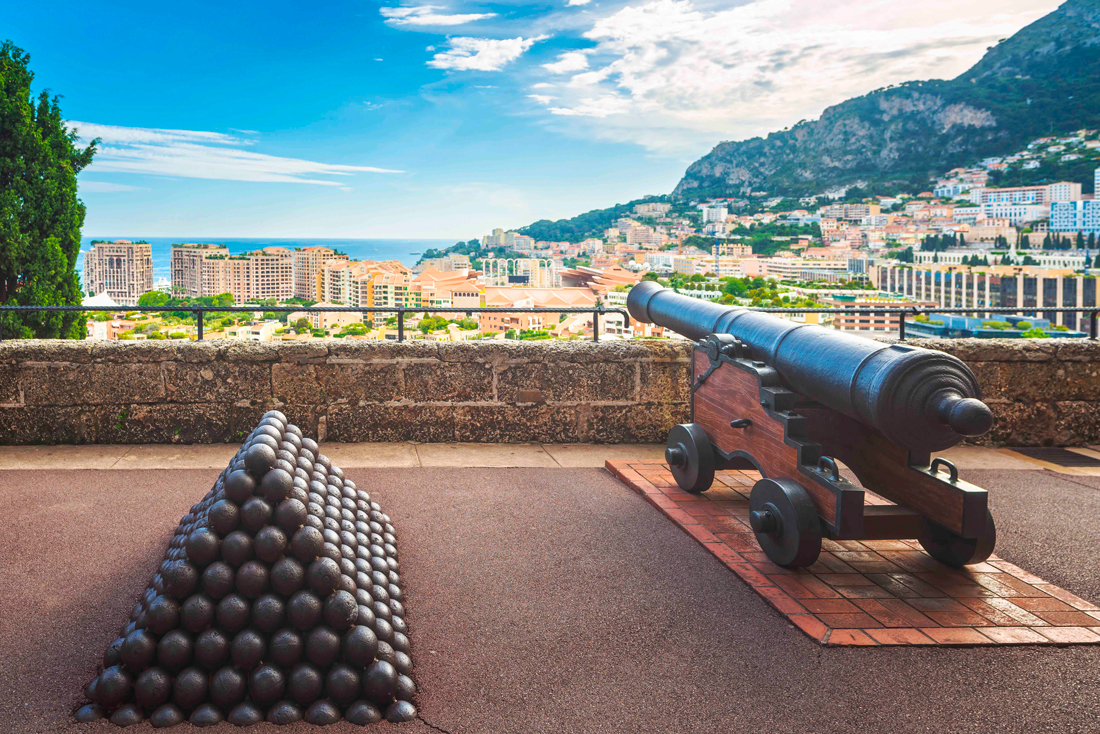
- Monaco’s name derives from Greek. It was referred to by the Ligurians as Monoikos (‘single house’ in Greek)
- Throughout Ancient Times, the port of Monaco was associated with the Greek demi-god Hercules.
- The Romans also called the port Portus Herculis Monœci.
- Curiously, the French Revolution momentarily used the name Fort Hercule to designate Monaco.
- Monaco has been in the hands of the Grimaldis since 1297. Recognition of the Grimaldis’ authority occurred in 1314.
- The oldest part of the Principality is the Rocher, the rocky promontory on which has been built the Prince’s Palace.
- During the French Revolution and the First Empire (1793-1814), Monaco was annexed by France.
- In 1848, Menton and Roquebrune seceded from Monaco after protesting against a tax imposed on lemon exports. The two cities joined the Kingdom of Piedmont-Sardinia.
- On 19 April 1956, Prince Rainier III married the American actress Grace Kelly.
- Prince Rainier III (1923-2005) and Princess Grace (1956-1982) are buried in the cathedral of Monaco.
- In 2005, Rainier’s son, Albert II (born 1958), became the new Prince of Monaco.
Politics and Diplomacy
![Rocher de Monaco - Changing of the Guards © Nikolai Karaneschev - licence [CC BY 3.0] from Wikimedia Commons](https://frenchmoments.eu/wp-content/uploads/2014/08/Monaco-Changing-of-the-Guards-©-Nikolai-Karaneschev-licence-CC-BY-3.0-from-Wikimedia-Commons.jpg)
- The official name in French of the micro-state is “Principauté de Monaco“.
- Monaco is a constitutional monarchy with Prince Albert II as head of state.
- Although Monaco has a small military force, it has no navy or air force. The military defence of the Principality is the responsibility of France.
- Until 2002 Monaco would have become French were the royal line to die out.
- The official religion of the Principality is Roman Catholicism, although freedom of other religions is guaranteed by the constitution.
- Monaco became a full member of the United Nations in 1993 and of the Council of Europe in 2004.
- The Principality is not a member of the European Union.
- Since 1968, the Principality has been part of the EU customs territory due to its customs union with France.
- Monaco is a de facto member of the Schengen area (its borders and customs territory are considered part of France)
- The flag has two equal horizontal bands of red and white, which are the heraldic colours of the House of Grimaldi. Except for its proportions, the flag is identical to that of Indonesia and similar to Singapore and Poland.
- Monaco’s motto is “Deo Juvante” (With God’s help).
- Monaco’s national anthem is “Hymne monégasque” (lyrics by Louis Notari, music by Charles Albrecht): Forever, in our land / One flag has flown in the wind / Forever, the colours red and white / Have symbolised our liberty / Great and small [people] have always respected them.
- The Principality’s National Day (Fête du Prince) takes place on 19 November.
Economics

- The Monegasque GDP for the year 2020 amounts to 5.97 billion euros against 6.60 billion in 2019.
- The unemployment rate is not reported but is estimated to be 4.5% of the labour force in 2021.
- The Principality has the world’s lowest poverty rate and the world’s highest number of millionaires and billionaires per capita.
- Monaco’s primary sources of income include tourism, banking, cosmetics and biothermics.
- The state keeps monopolies in many sectors: tobacco, postal service, and telephone network.
- The Société des Bains de Mer manages the Monte-Carlo Casino, the Monte-Carlo Opera and the Hôtel de Paris. The company is Monaco’s biggest employer.
- The Principality levies no income tax on individuals.
- Monaco uses the euro as currency and has the right to mint euro coins with its design on the national side.
- The SNCF (the French national rail system) serves Monaco’s underground train station.
- Until 2020, the Riviera Express train linked Monaco to Moscow to Nice. The train took 52 hours to complete the 3,318 km-long trip across Russia, Belarus, Poland, Czech Republic, Austria, Italy and France.
- There are 12 hotels in Monaco, including 4 ‘five stars’ and 4 ‘four stars’, totalising 2,484 bedrooms.
- More than 7 million people visit Monaco, mainly on a one-day excursion. In 2019, approximately 365,000 tourists spent at least a night in Monaco.
- The Oceanographic Museum welcomes more than 600,000 visitors each year.
Culture and other facts
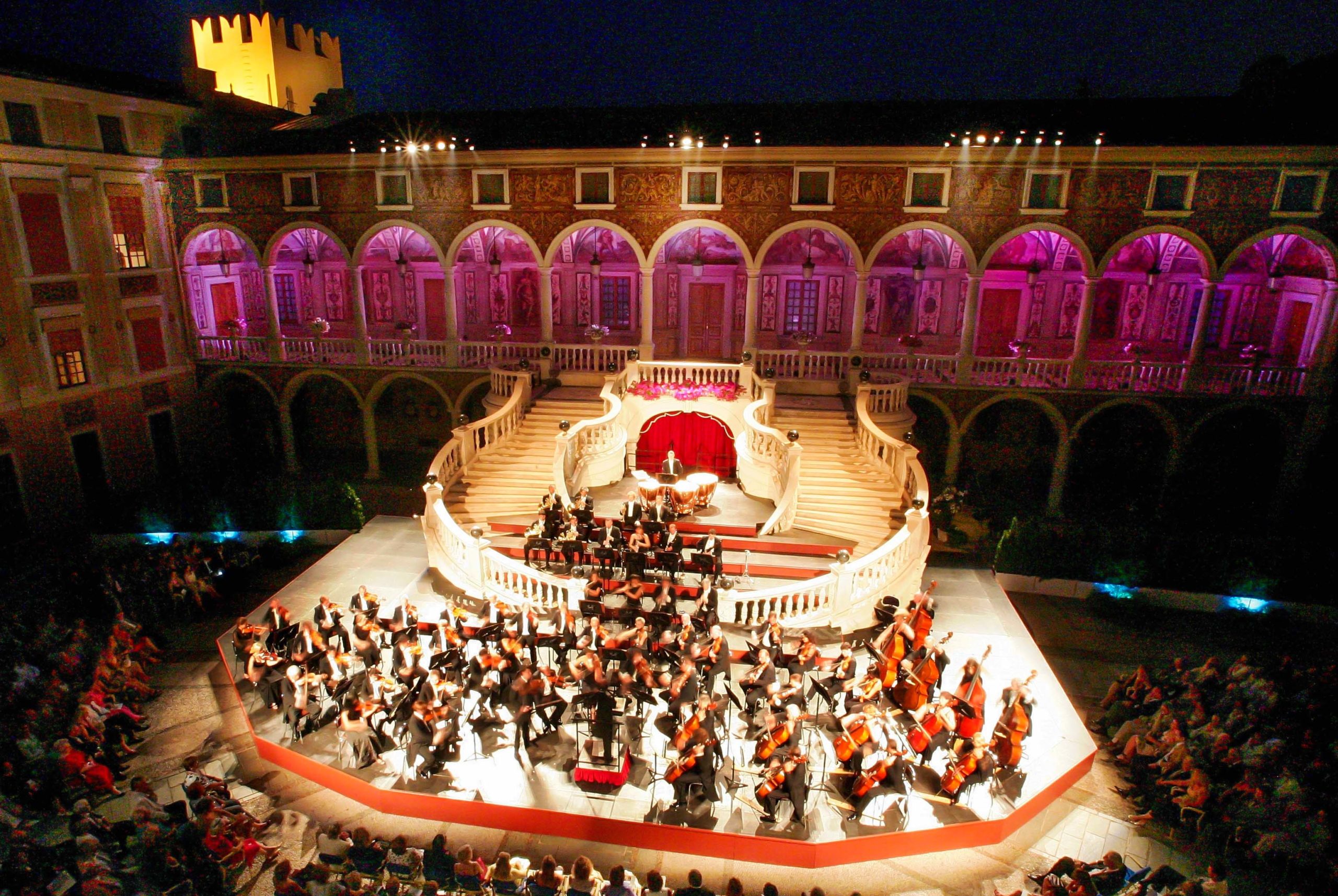
- Monaco’s tallest building is the Odeon Tower (Tour Odéon). 170 m high, the skyscraper was completed in mid-2014.
- Seven public inclined lifts provide public transport.
- Monaco has two marinas: the largest is Port Hercule, and the newest is Fontvieille.
- ID is checked as the citizens of Monaco are forbidden to enter the Monte Carlo Casino’s gaming rooms.
- James Bond, a fictional British spy, is often associated with the Casino de Monte-Carlo.
- The Monaco Grand Prix has been held each year in the streets of Monaco since 1929.
- The Internet country code domain is .mc
- The licence plate country code usually displayed on a small white oval sticker is MC.
Pin in on Pinterest
Did you enjoy the reading of the Facts and Figures about Monaco? If so, please pin these images on Pinterest, or share this article on Facebook and Twitter! 😊
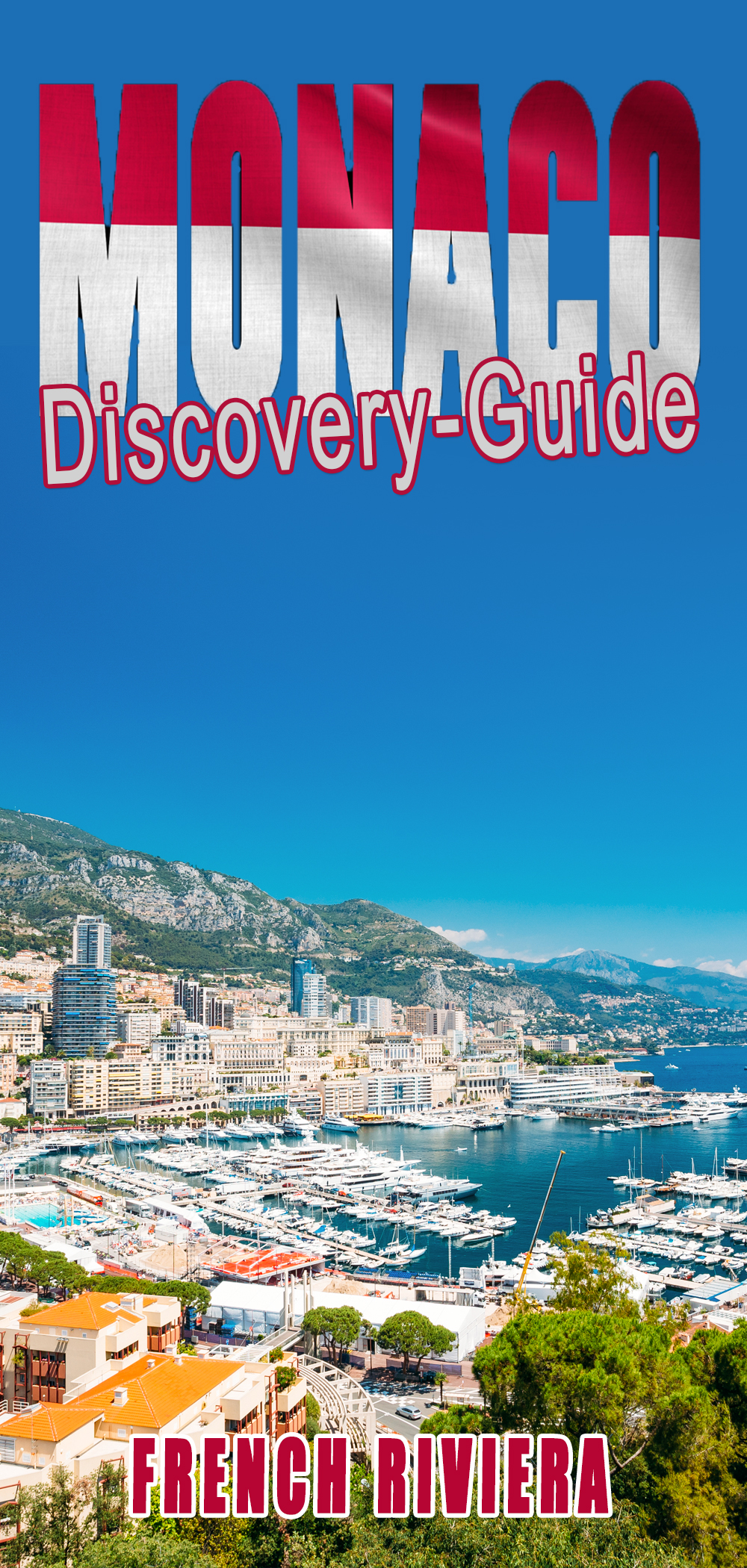
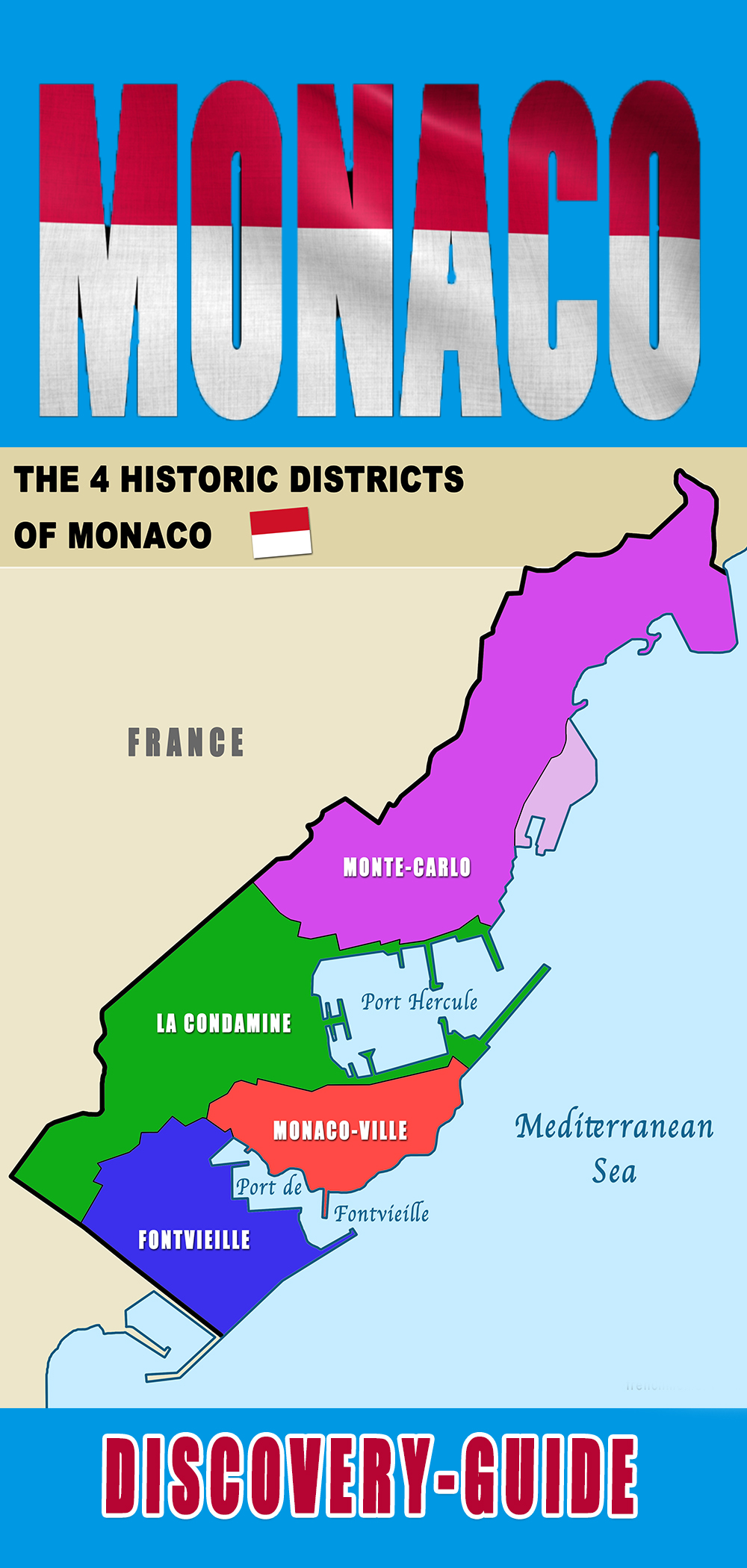
Practical Facts and Figures about Monaco
What to do in Monaco?
Want to know what you can do in and around Monaco? Click on the image below for a list of activities:
From Private Guided Walking Tour to Lamborghini Driving Experience and French Riviera Cruises, the Principality dazzles with glamorous activities you won’t forget. Here’s a little list of what’s on offer!
Where to stay in Monaco?
Did you know? There are 12 hotels in the Principality, four ***** and four ****. Unsurprisingly, accommodation in the Principality is very expensive. Unless you absolutely want to stay within the Principality, there is a cheaper alternative. For this, you should look at the Beausoleil district in France, a few minutes walk from the Monaco train station. Prices are much more affordable than in Monaco.
Click here to choose your accommodation in Monaco and its surroundings, or browse the map below:
How to get to the Principality of Monaco
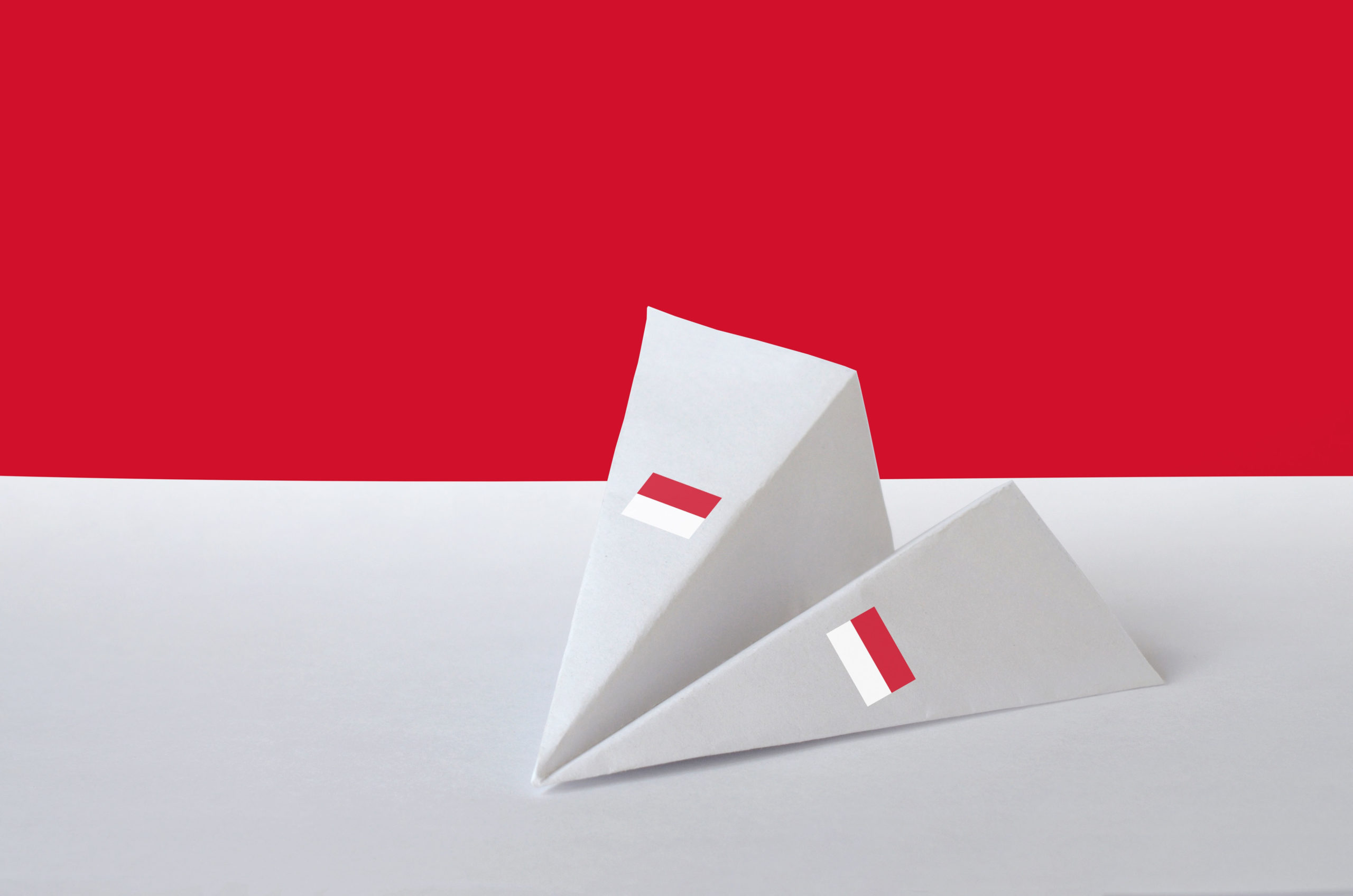
Arriving by car
Monaco is accessible from Nice via the scenic coastal Corniche roads:
- the Corniche Inférieure road follows the coast via Beaulieu,
- the Moyenne Corniche passes through Èze,
- and the Grande Corniche crosses La Turbie.
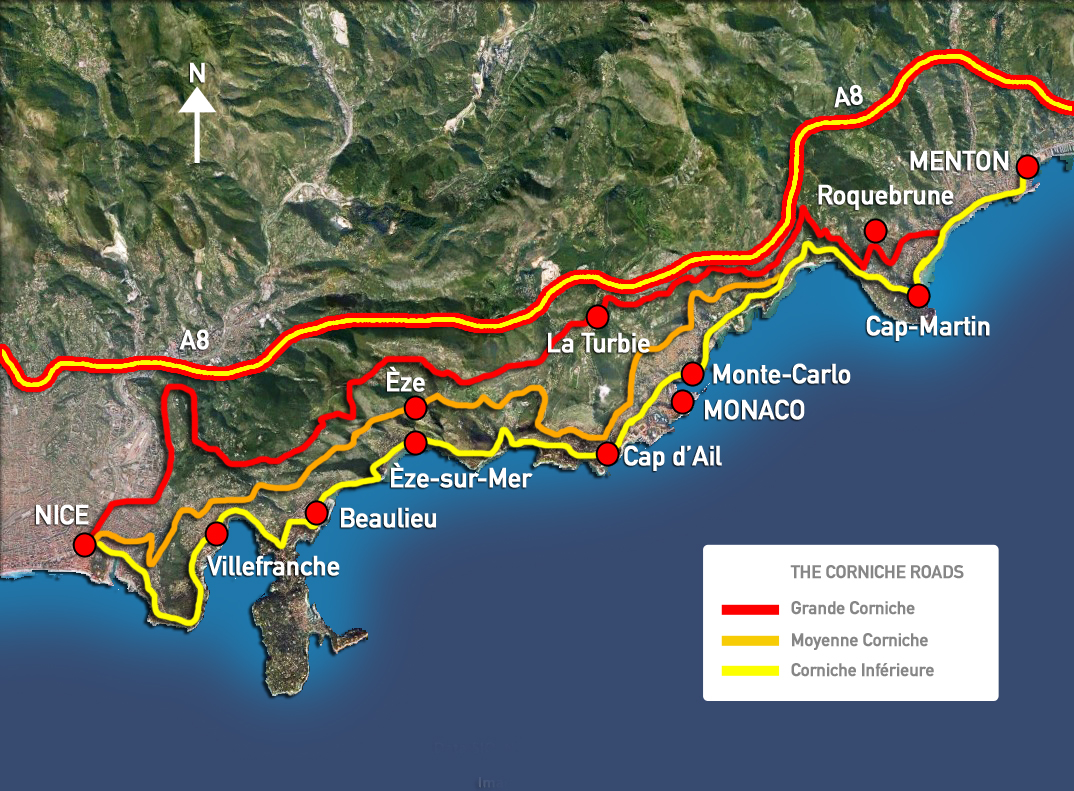
The Principality is bordered by the French A8 motorway linking Provence to Italy. Paris is 950 km away via the A6, A7 and A8 motorways.
Thanks to the A8 motorway, you can reach the centre of Monaco in less than 30 minutes from Nice and its airport.
- Exit 56 “Monaco” in the direction of France -> Italy
- Exit 58 “Roquebrune Cap Martin” in the direction of Italy -> France
However, please note that access to Monaco-Ville (Le Rocher) is limited to users whose vehicle is registered in Monaco and the French département of Alpes Maritimes [06].
How to park in Monaco
Other vehicles should park in the Parking des Pêcheurs, which has pedestrian access to the Rock in a few minutes.
It is advisable to leave your vehicle in one of the many public car parks. The Principality has no less than 40 car parks with 15,500 spaces.
All the car parks are underground, guarded and secure. They are therefore the best solution for parking your vehicle. All public “Monaco Parking” offers free parking for 1 hour. For more information, visit the official website of the Monaco Carparks.
Nearest Airport
Nice-Côte d’Azur International Airport links the Principality of Monaco to more than 86 destinations worldwide.
Through Nice Airport (25 minutes away by motorway), Monaco is linked daily to the main European capitals and, beyond, to all continents.
The airline Air France offers 73 flights a day to Nice Airport, directly from 15 cities in France and seven cities worldwide.
Moreover, the airport is 7 km away by helicopter to the Monaco heliport situated in the Fontvieille district.
Monaco Train Station
Monaco is located on the Marseille-Ventimiglia railway line. The underground SNCF station at Monaco-Monte-Carlo, offers daily TGV services to Paris, and up to ten other cities, via the nearby Nice-Ville station.
TER trains link Monaco to Menton and Ventimiglia to the north-east, Nice, Antibes, Cannes, Grasse and Saint-Raphaël to the south-west.
In addition, there are several daily connections to Turin, Milan and Rome via Ventimiglia.
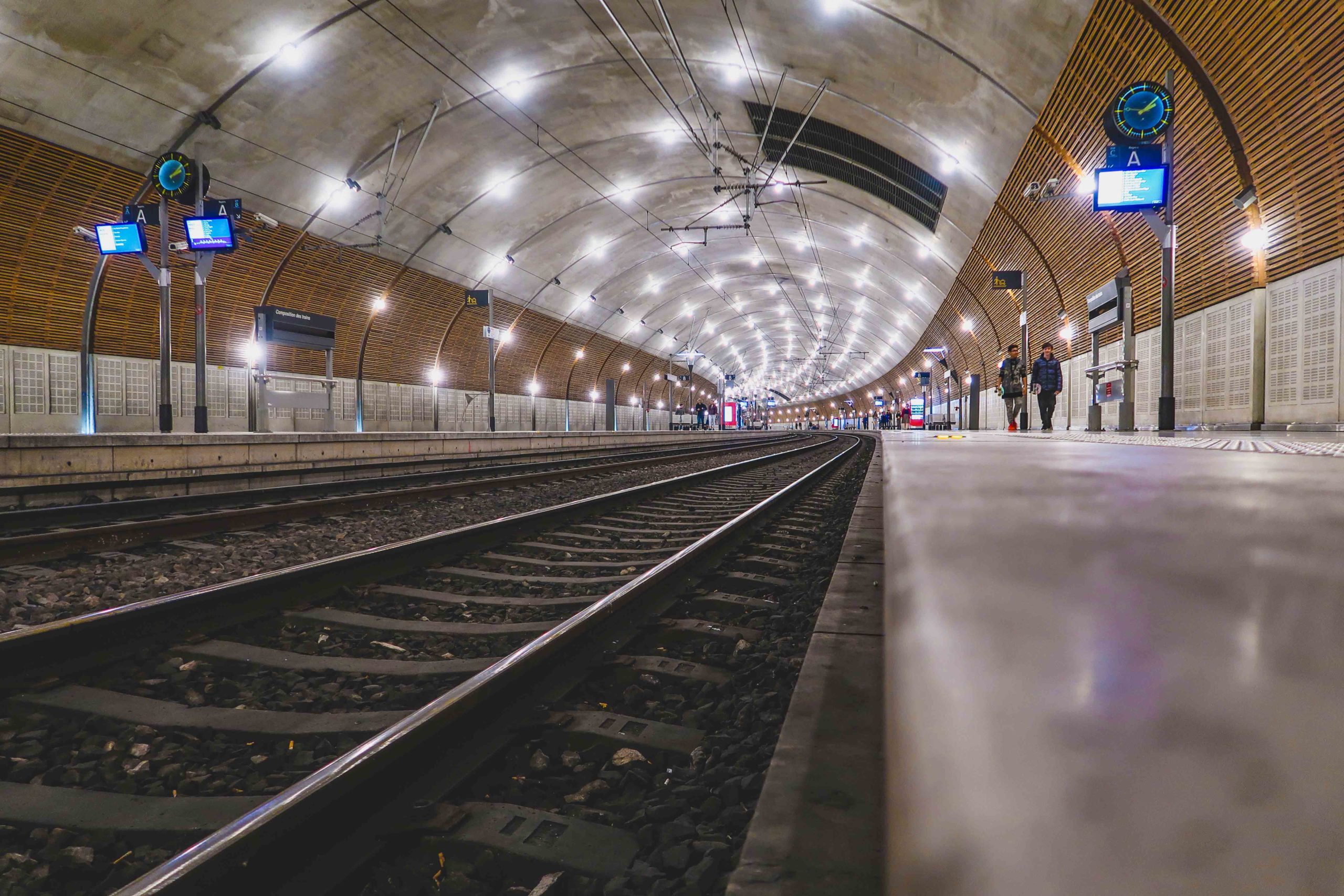
Six entrances allow users to access the underground railway station via a series of escalators or lifts:
Sainte Dévote Bridge, Parvis de la Gare (behind Sainte Dévote Church), Port Hercule, Jardin Exotique, Allée Lazare Sauvaigo/Rue Grimaldi/Rue Suffren-Reymond, Avenue Prince Pierre.
Facts and Figures about Monaco – Featured image: © Monaco Press Centre Photos



